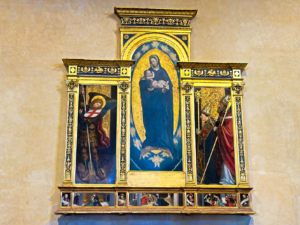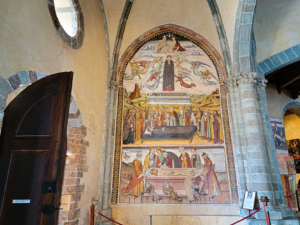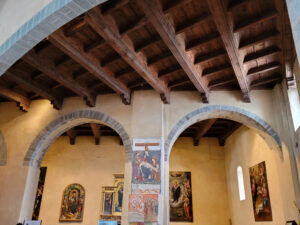Sacra di San Michele - A Mountaintop Majesty
Are you looking for an ancient Abbey set in a sacred spot with breathtaking views and art? Sacra di San Michele is all of that and more!
Sacra di San Michele is an abbey dedicated to Saint Michael the Archangel in the Val di Susa just 25 miles from Torino. In this valley. the church was built on the summit of Mt. Pirchiriano and is visible at night from the city. The Sacra di San Michele is designated as the ‘Symbolic Monument of the Piedmont Region’ and for good reason. Legend proclaims Saint Giovanni Vincenzo, a hermit, was called to build this monumental structure by Saint Michael the Archangel in the 10th century when he appeared to him many times, and is said to have helped him bring the materials from the valley floor. When you see where this is built, you will also have faith in that legend. As you can see in these photos below, all seasons are spectacular here.
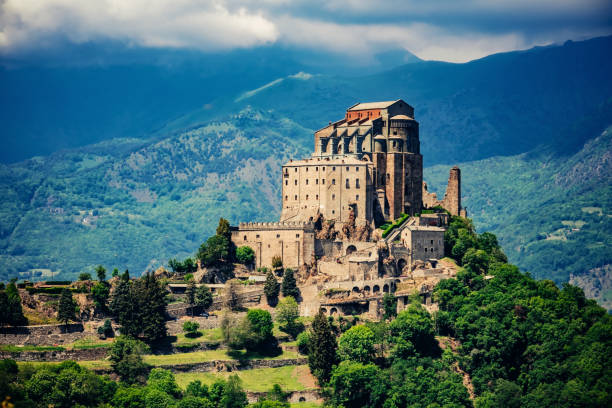
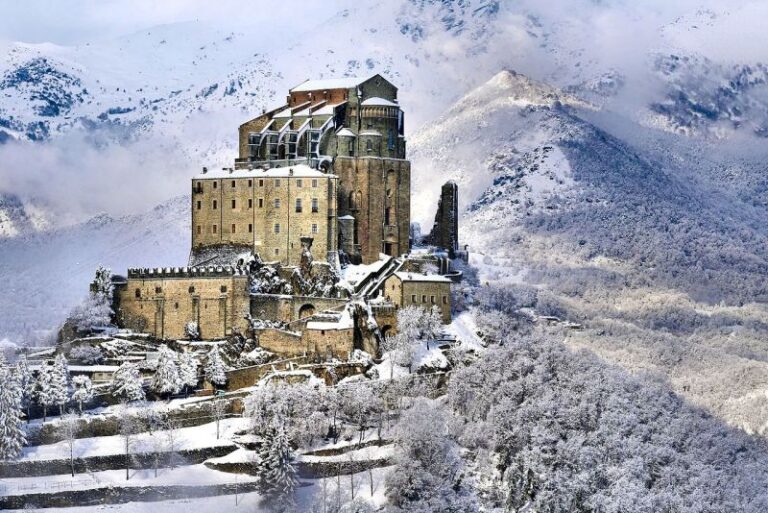
Scenery Surrounds You
My Italian friends Anna and Sergio told me they they were taking me to a special place in the mountains, an abbey beautifully perched on a mountain overlooking the valley. It was record heat and escape from it sounded great. Little did I know what a spectacular day I would have. We drove through the Val di Susa and up a mountain road to the site. Parking is a small lot is along the main mountain road that leads to a half mile tree lined path. It’s easy, flat and lovely.
Sepulcher of the Monks
Your first encounter will be The Sepulcher or Tomb of the Monks. It’s an ancient church used by the Monks as a cemetery chapel from the 10th century. It is thought to be built and designed with the characteristics of the Holy Sepulcher in Jerusalem and was dedicated to Santo Stefano. It fell into ruin during the 16th century.

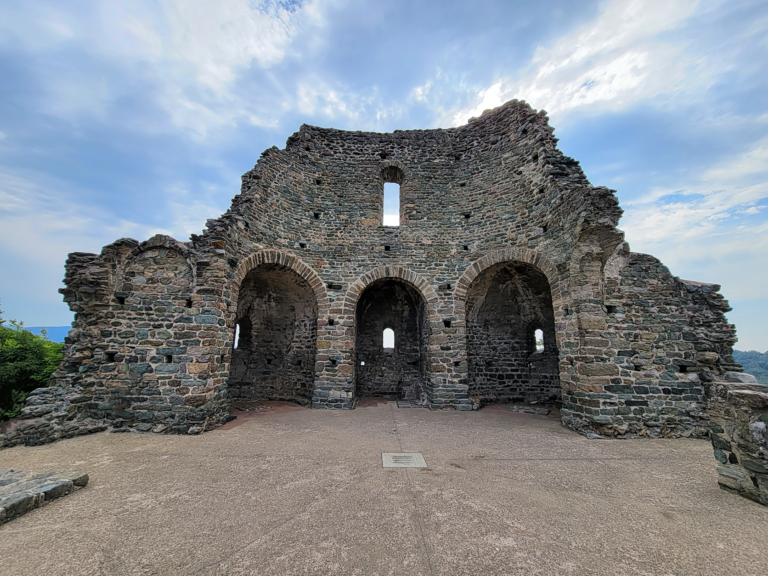
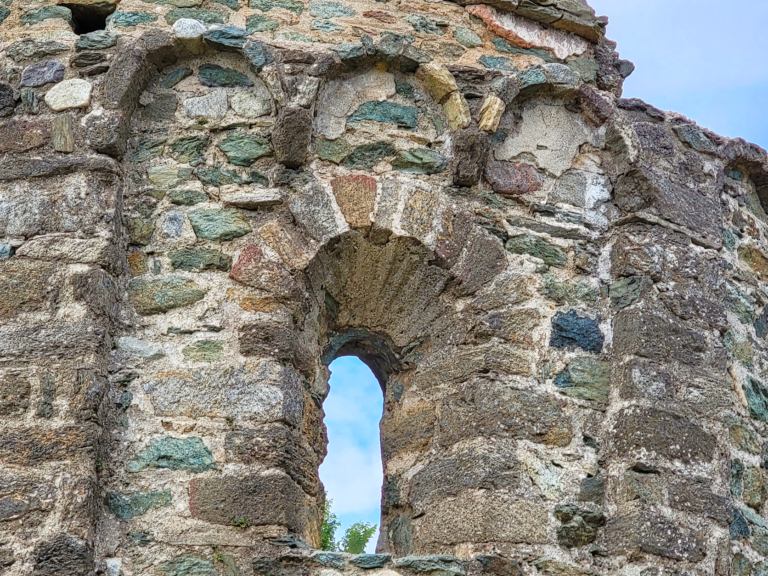
The Path to Prayer
After passing the Sepulcher of the Monks, you proceed up a tree lined path towards the Abby to the gift shop that sells tickets. That’s where the magic begins. Through the set of old doors you encounter the first of three steep, stone staircases. As you begin your ascent, you begin to see and feel the overwhelming magnitude of the building. The Abby is built literally on and around the pinnacle of Mount Pirchiriano. Portions protrude out of the structure and a balcony it situated on top of one.

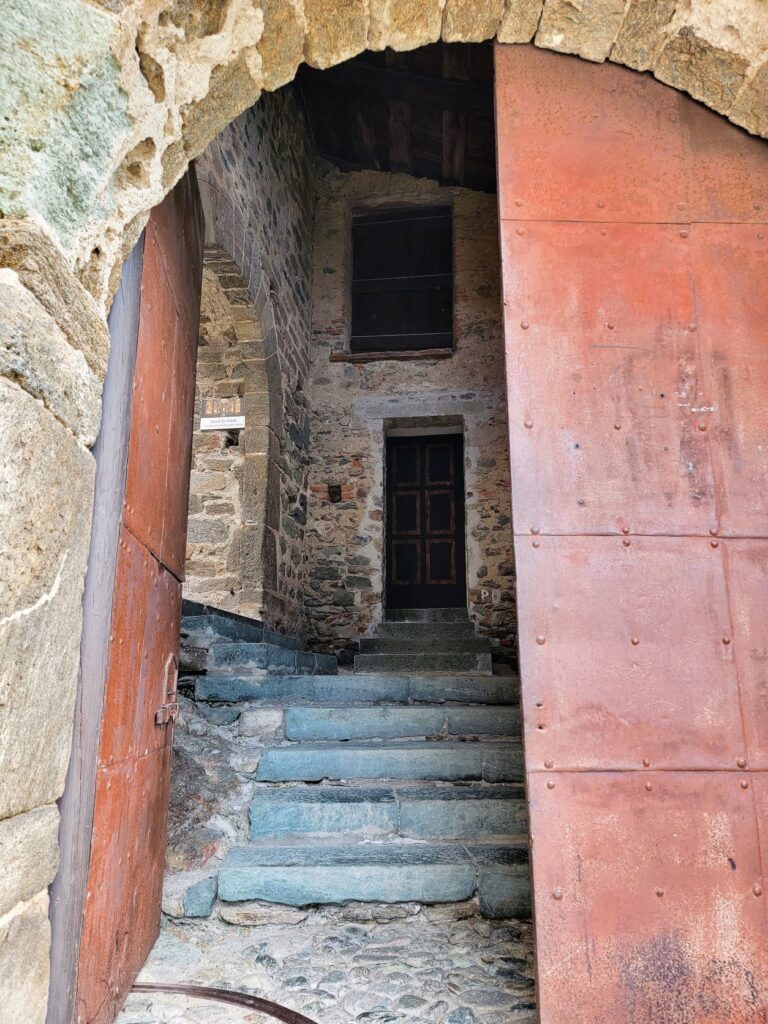
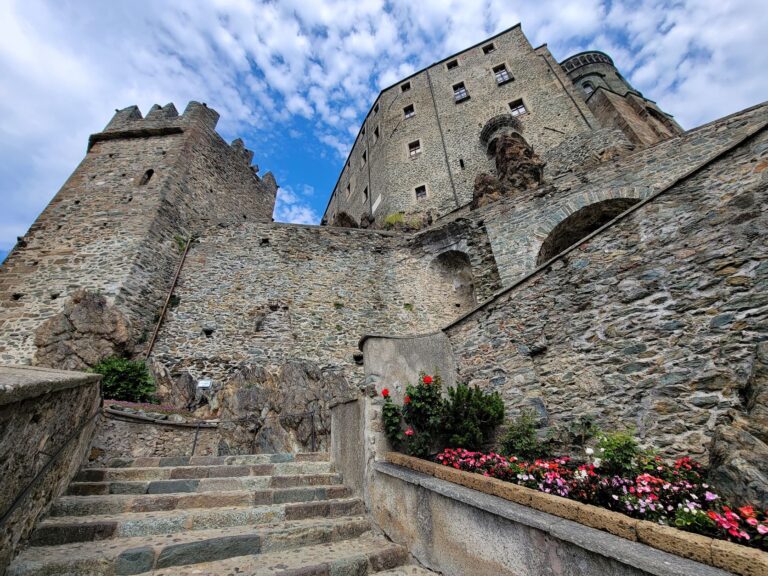
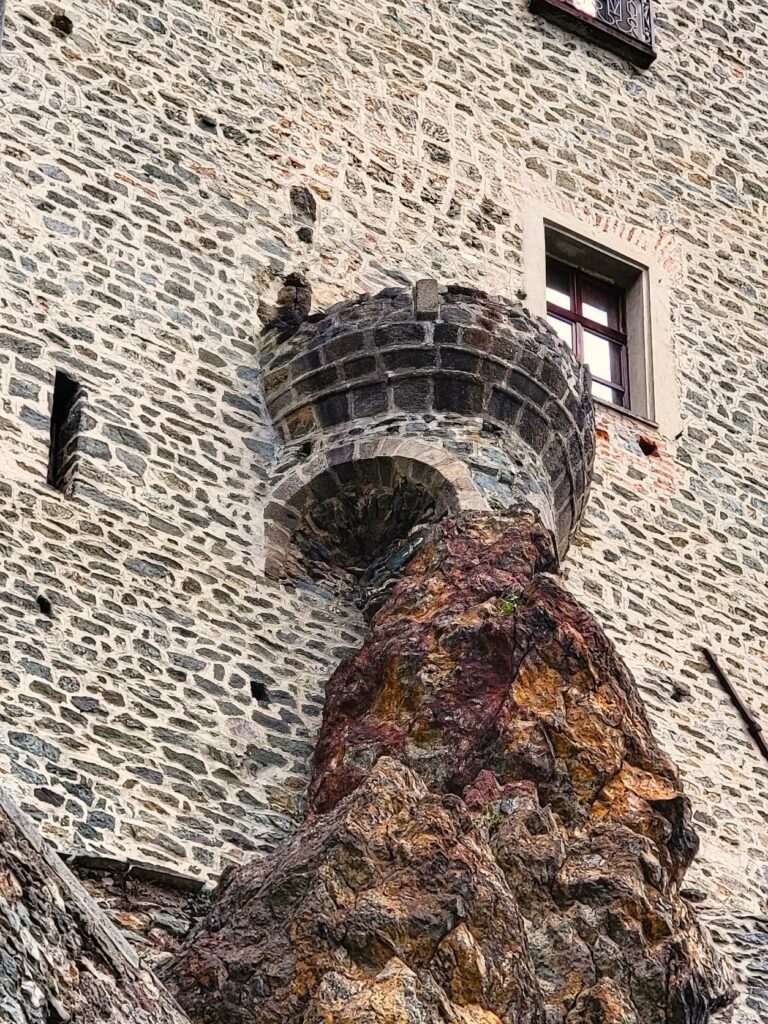
Entry to the Abby.... and Holy Staircase
The climb continues past the towering façade of the building and the beautiful sculpture of Saint Michael the Archangel on a mountain spur. It’s an award winning piece by the Tyrolean sculptor Paul de Doss-Moroder. A beautiful work standing 17 feet high with a wing span of 5 feet and weighing a whopping 7500 lbs. Finally you get to the entrance doors of the Abby itself and you’re wondering if this is it. Well, it’s definitely a great part of your visit, but you’re not there yet. Two more spectacular staircases await you! Peering in, you see the base of the Abby built by the Monks of San Benedetto assumed to be around 1150 give or take a few years. A monumental task of faith. As you take your first steps into the ‘atrium’ as they call it, you’re not sure what to think.
Entry to the Abby.... and Holy Staircase
The climb continues past the towering façade of the building and the beautiful sculpture of Saint Michael the Archangel on a mountain spur. It’s an award winning piece by the Tyrolean sculptor Paul de Doss-Moroder. A beautiful work standing 17 feet high with a wing span of 5 feet and weighing a whopping 7500 lbs. Finally you get to the entrance doors of the Abby itself and you’re wondering if this is it. Well, it’s definitely a great part of your visit, but you’re not there yet. Two more spectacular staircases await you! Peering in, you see the base of the Abby built by the Monks of San Benedetto assumed to be around 1150 give or take a few years. A monumental task of faith. As you take your first steps into the ‘atrium’ as they call it, you’re not sure what to think.
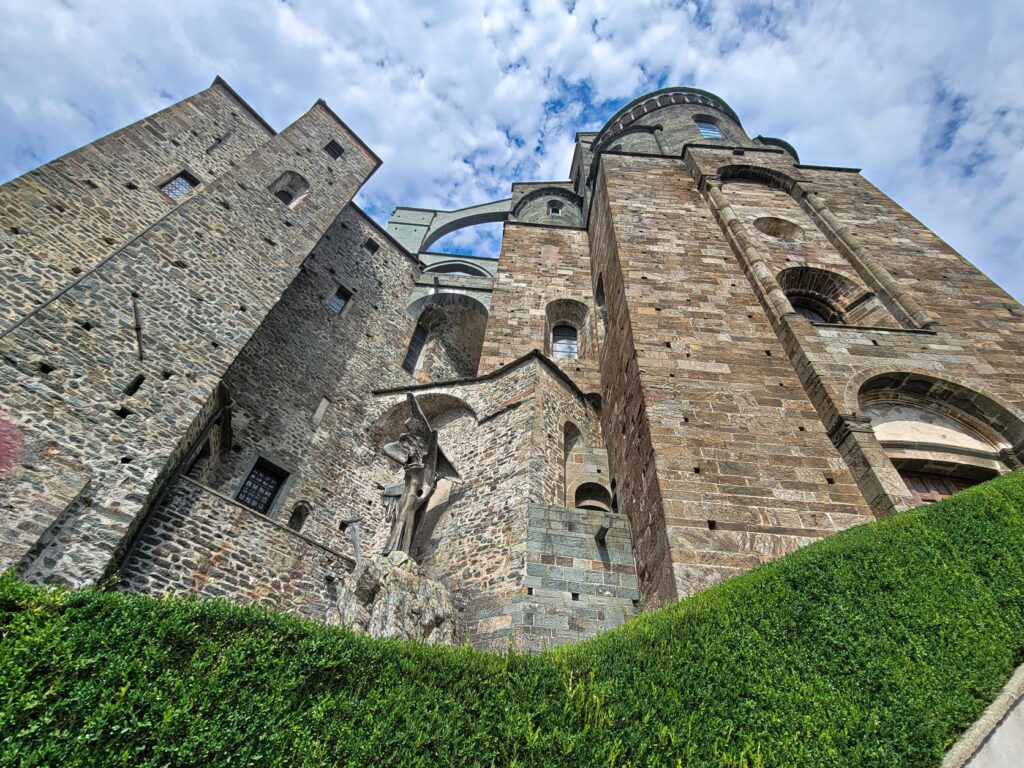
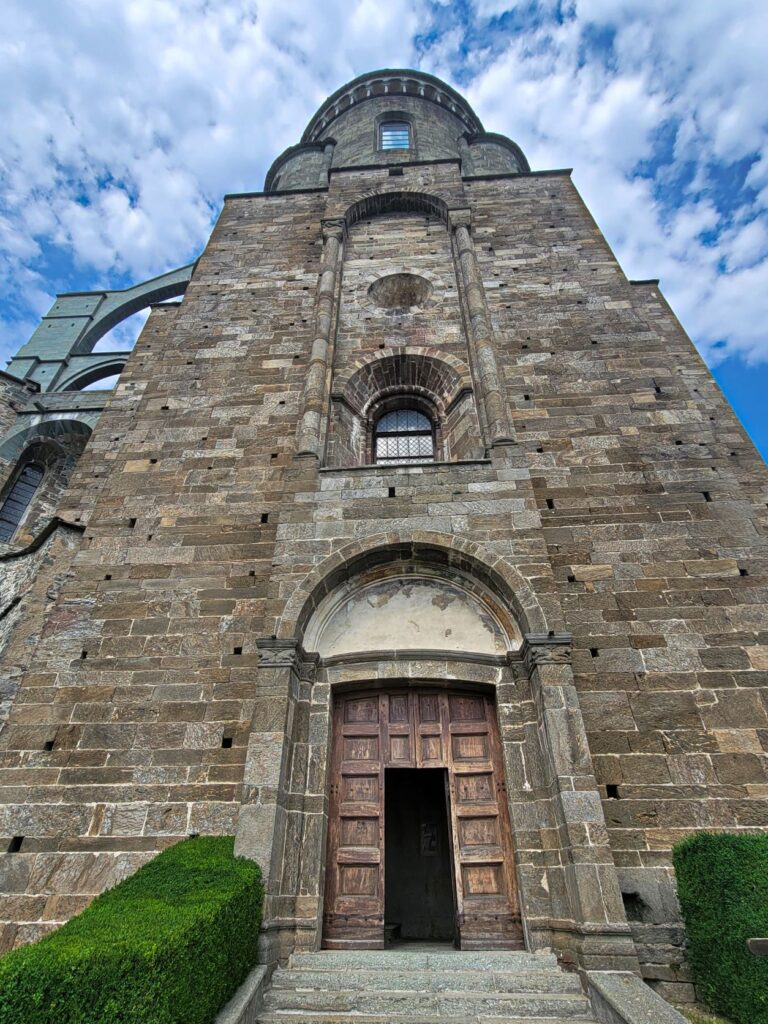
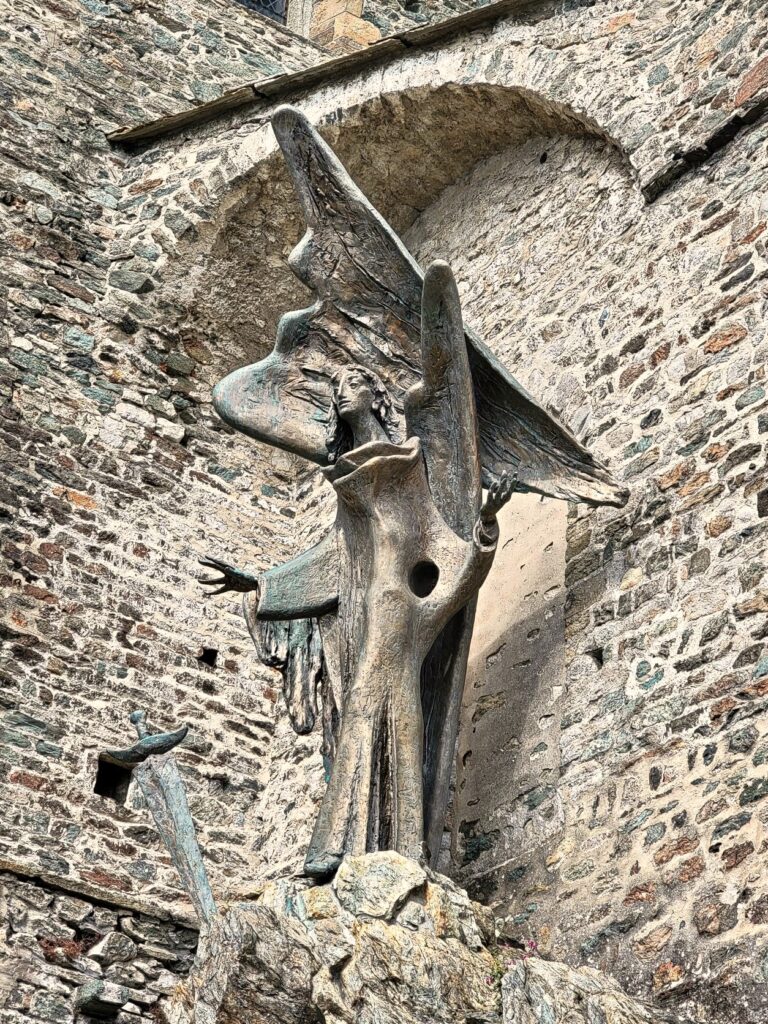
Scolone dei Morti - The Staircase of the Dead
You enter the Scolone dei Morti – or Staircase of the Dead, and an incredibly steep staircase meets your feet. As you look up and around you see evidence of tombs lining the steps. The steps are built up against the mountain stone protruding into the hall and it become apparent how difficult it was to build by hand beginning in the 10th century. Honestly, it’s hard to imagine. Tombs of Monks and admirable men of the Abbey were laid to rest here and the tombs then covered with plaster then adorned with paint. It’s hard to describe how steep the stone stairs are, but when I was climbing up, a gentleman was sitting on the steps going down one step at a time while grasping the railing. A fall down this staircase wouldn’t end well for anyone. Hmmm, Staircase of the Dead – a new meaning?
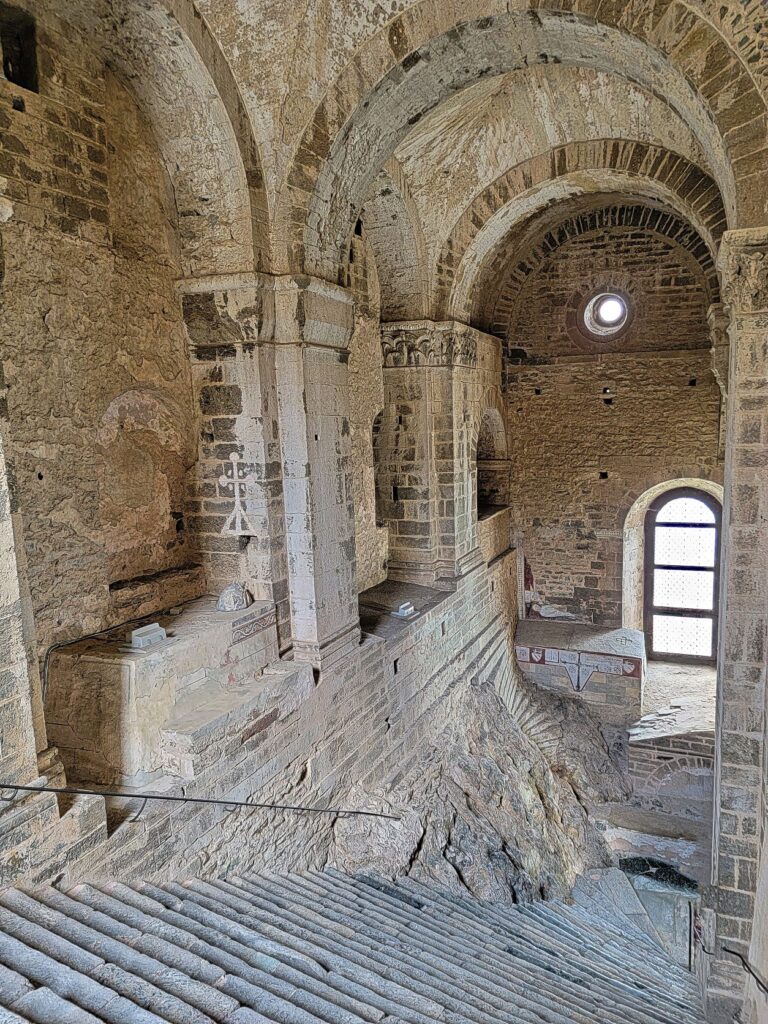
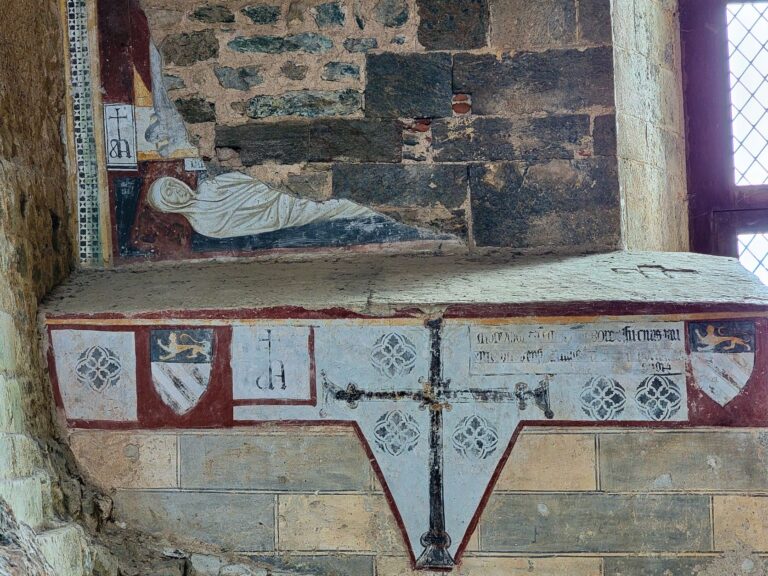
Steeper Than You Can Imagine!!
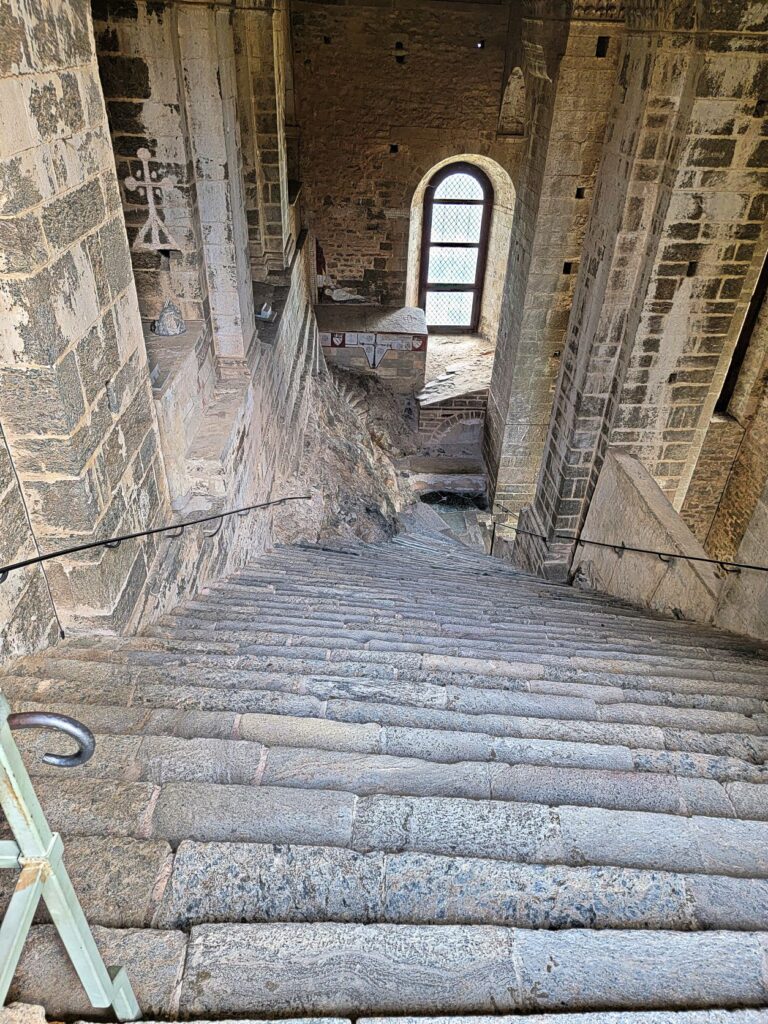
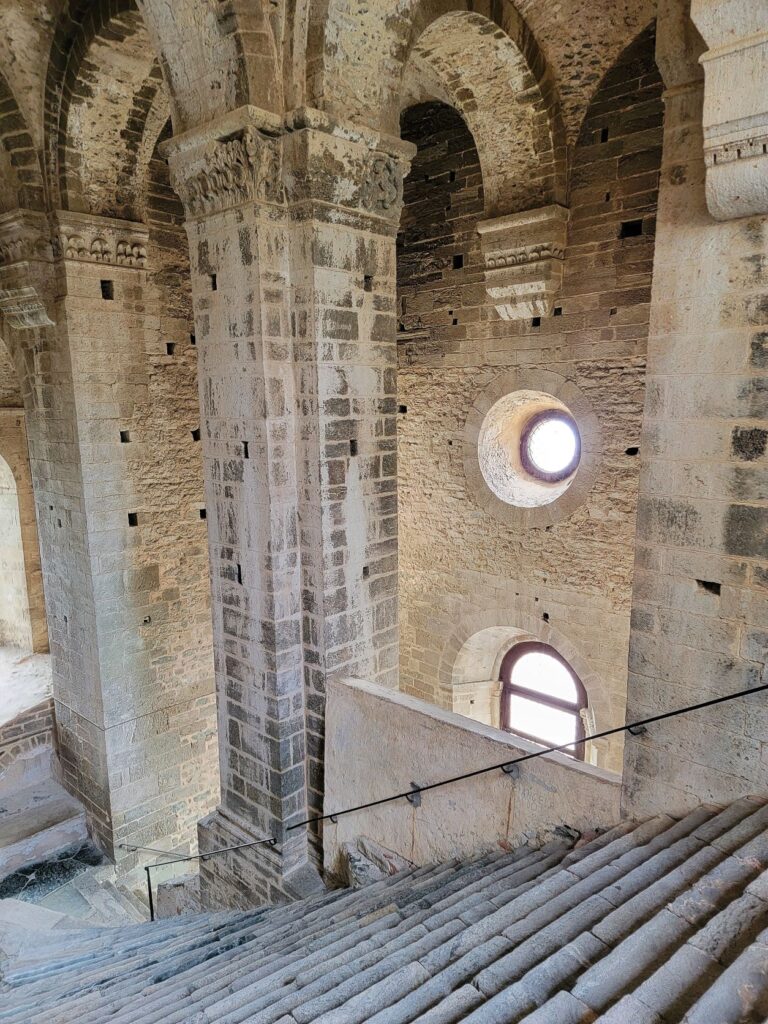
Blue Skies and Green Steps
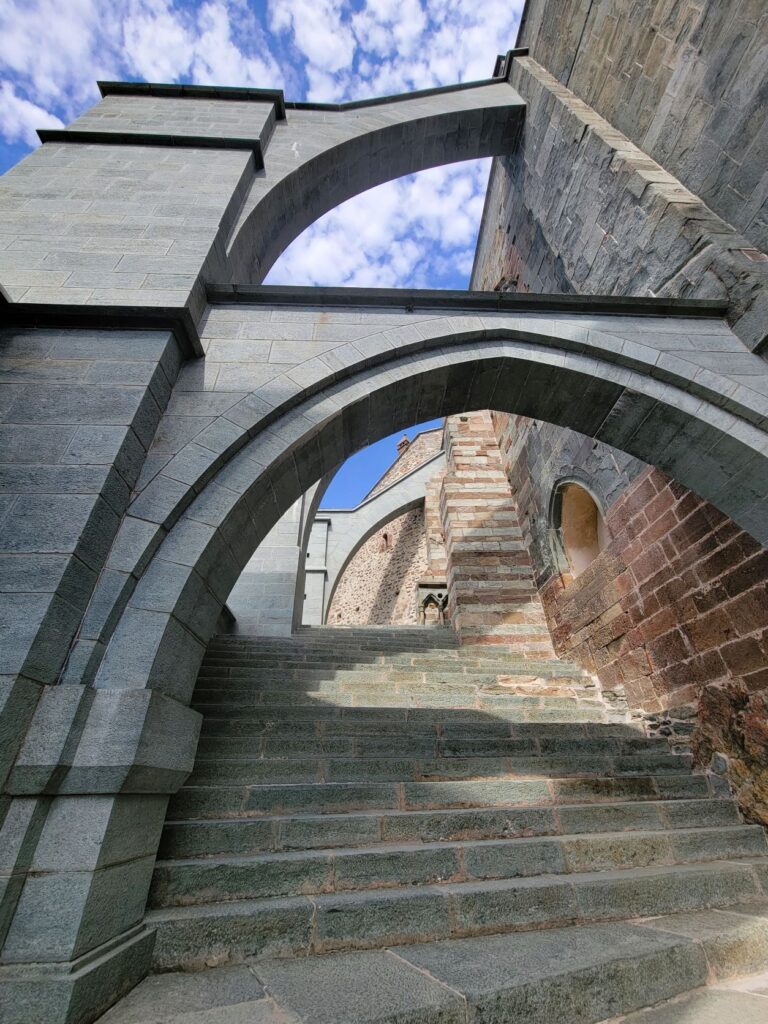
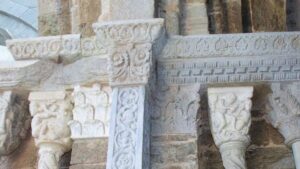
At the top of the Scolone dei Morti you’ve hiked 243 steps and you pass the Portal of the Zodiac which is columns and capitals from 1130. Carved are the twelve zodiac signs and the southern and northern constellations. You now stand on an open terrace with a beautiful view. You look down upon an apartment type building that is the Foresteria Grande that was built in the 11th century when the Abby and Monks were becoming famous and welcoming pilgrims. They needed a building for hospice and guests and it was largely reconstructed at the end of the 19th century. You look up to another steep staircase, the last one to the church, that features flying buttresses that were engineered to support the unstable wall of the church in 1937 by the architect Alfredo D’Andrade.
A Grand Entrance
The top terrace of the last staircase gives wonderous views and you finally are ready to enter the sanctuary. The entrance is elegant arches of gray, green and red carved stone with white granite columns and floral green capitals. The wooden doors are intricately carved depictions of Saint Michaels defensive garb and weapons.
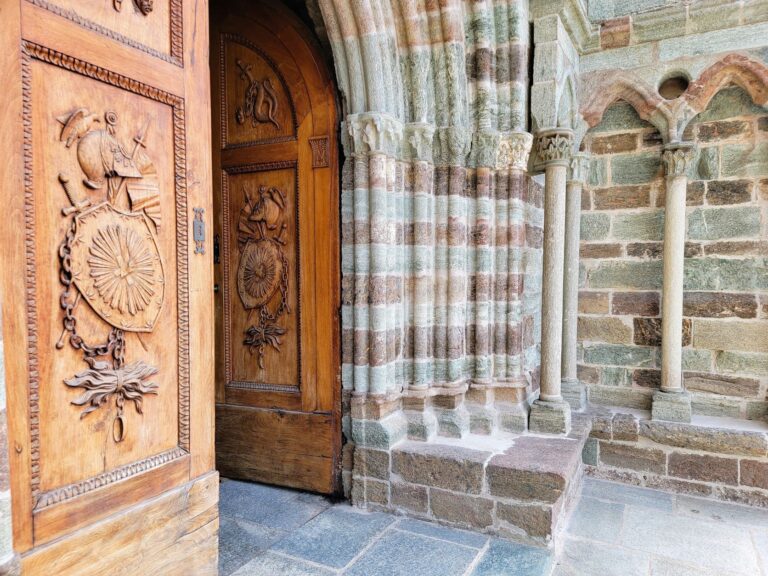
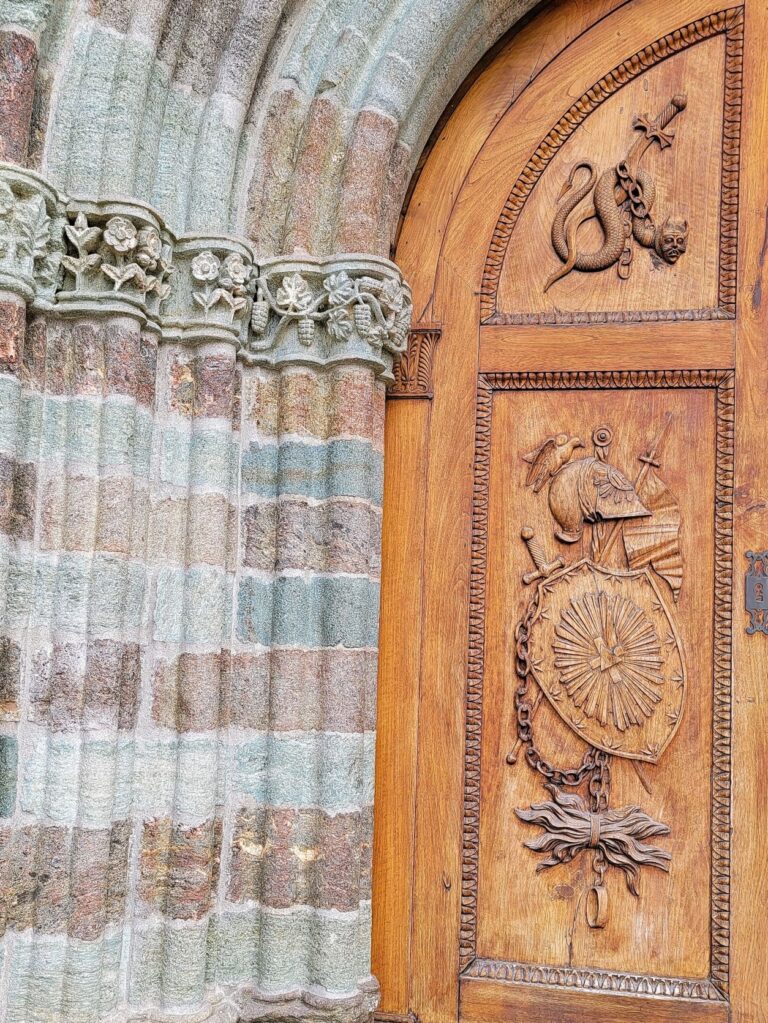
Welcome to the Sanctuary
To me, the climb to the sanctuary attributed to the old and holy feel of the Abby. The three apses in the main church are covered in brick, the ceiling plastered and painted in a simple tan with grey Romanesque-Gothic columns, pilasters and edges that add to the simple beauty. Not your common shiny marble interior, but a handsome, hand built monk masterpiece. During the Renaissance and medieval times astrological symbols and constellation lines were used as a way of tracking days and time like a calendar. In the church, the main apse is oriented towards the exact point where the sun rises and shines through the windows to the first arch and along the columns on 29 September, the Feast Day of San Michele. The royal Savoy family are laid in tombs all around the sanctuary.
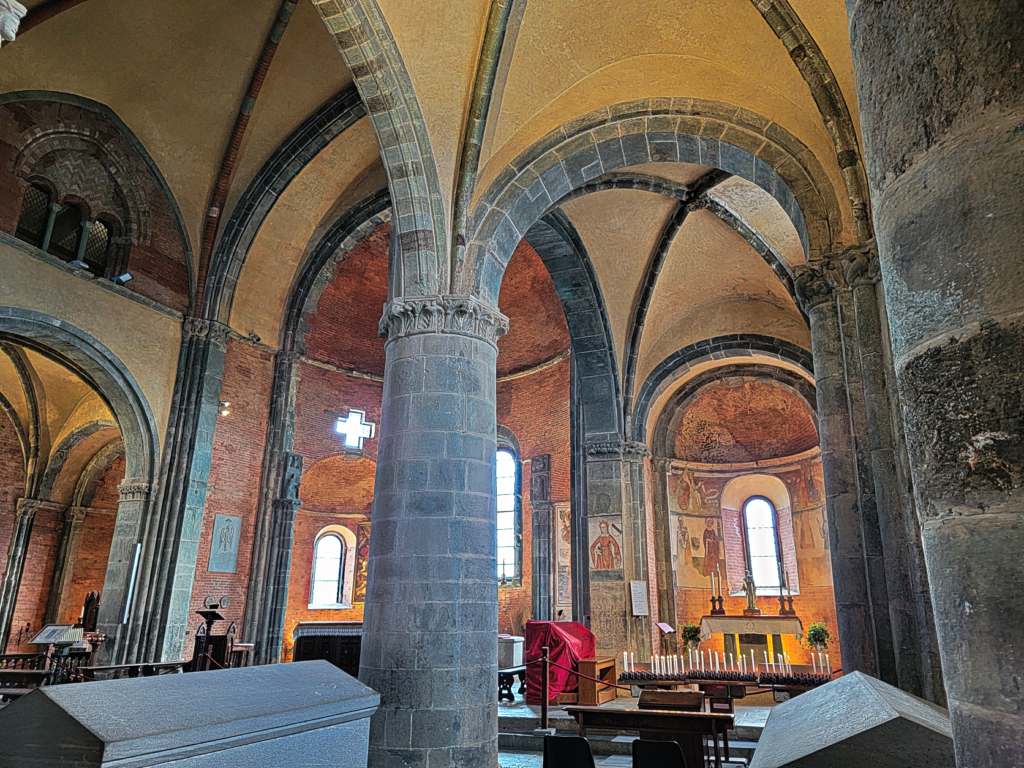
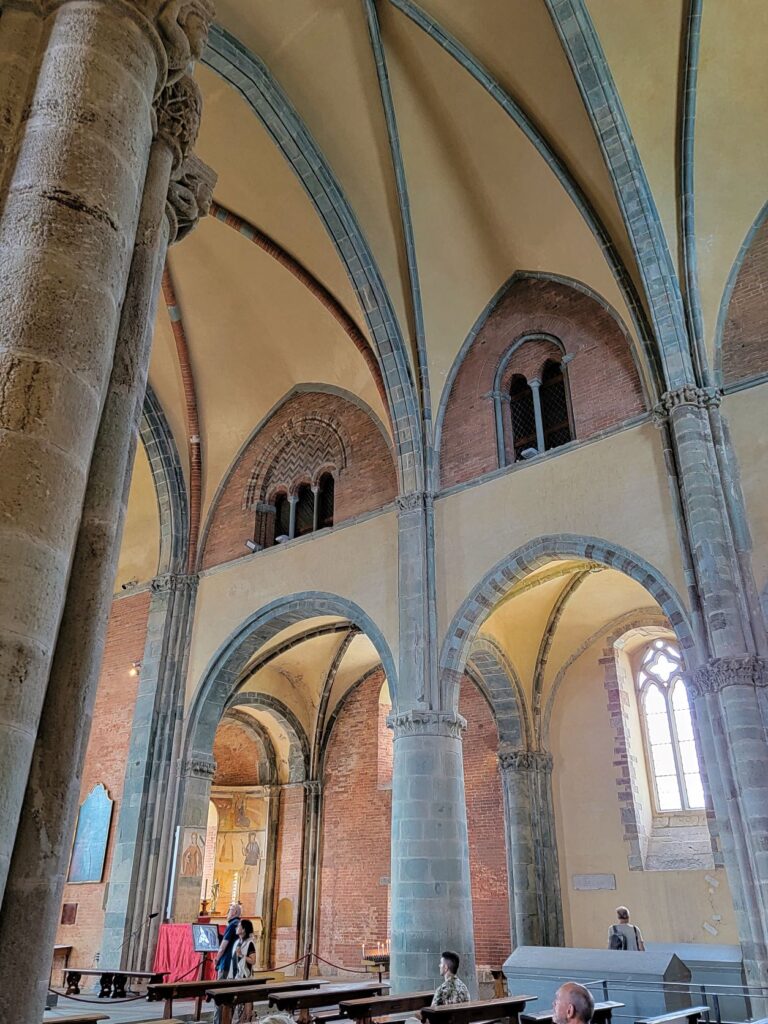
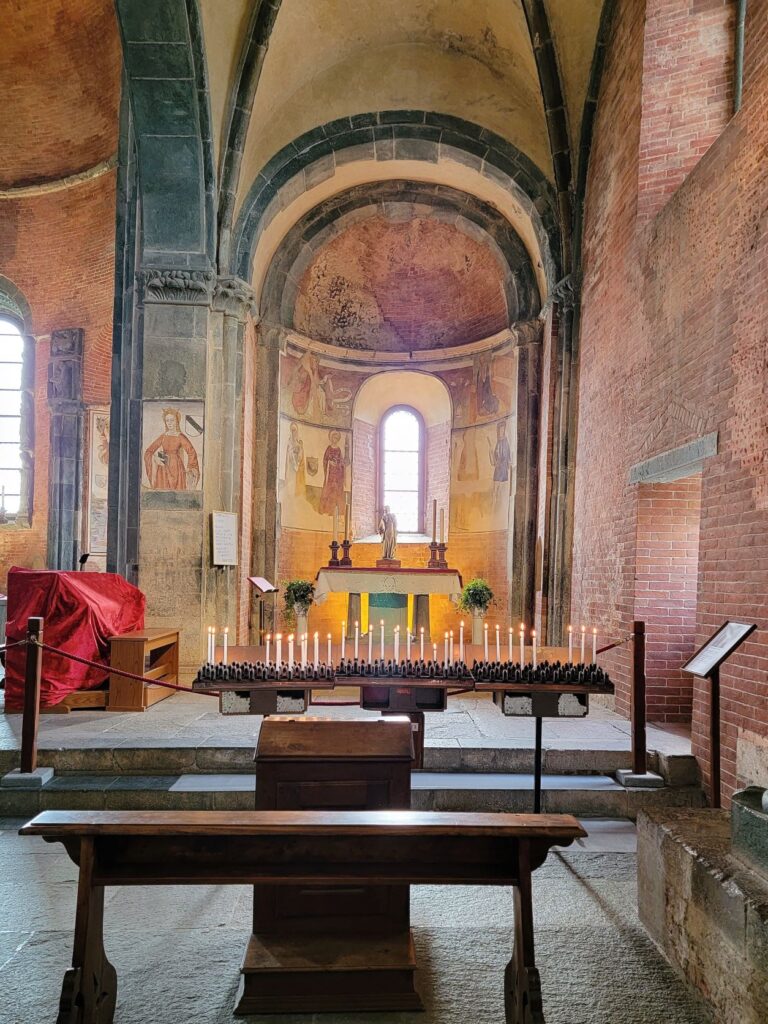
A Peaceful Pilgrimage
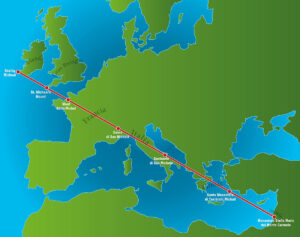
An important note, Sacra di San Michele one of seven monasteries on a line linking Ireland to Jerusalem on what is called, “The Sword of St. Michael.” Each monastery is dedicated to Saint Michael the Archangel who was the supreme leader of the angels in heaven. As described in the book of Revelation 12:7-12, there was a war in heaven and Saint Michael cast the devil into hell. These seven sanctuaries are also part of a centuries old pilgrimage that is still being sought. The seven churches are Skellig Michael in Ireland (of Star Wars fame), Saint Michael’s Mount in England, Mont Saint Michel in France, Sacra di San Michele in Piedmont Italy, Santuario di san Michele Archangel in Puglia Italy, Monastery of Symi Island Greece and Mount Carmel Monastery in Haifa, Israel.
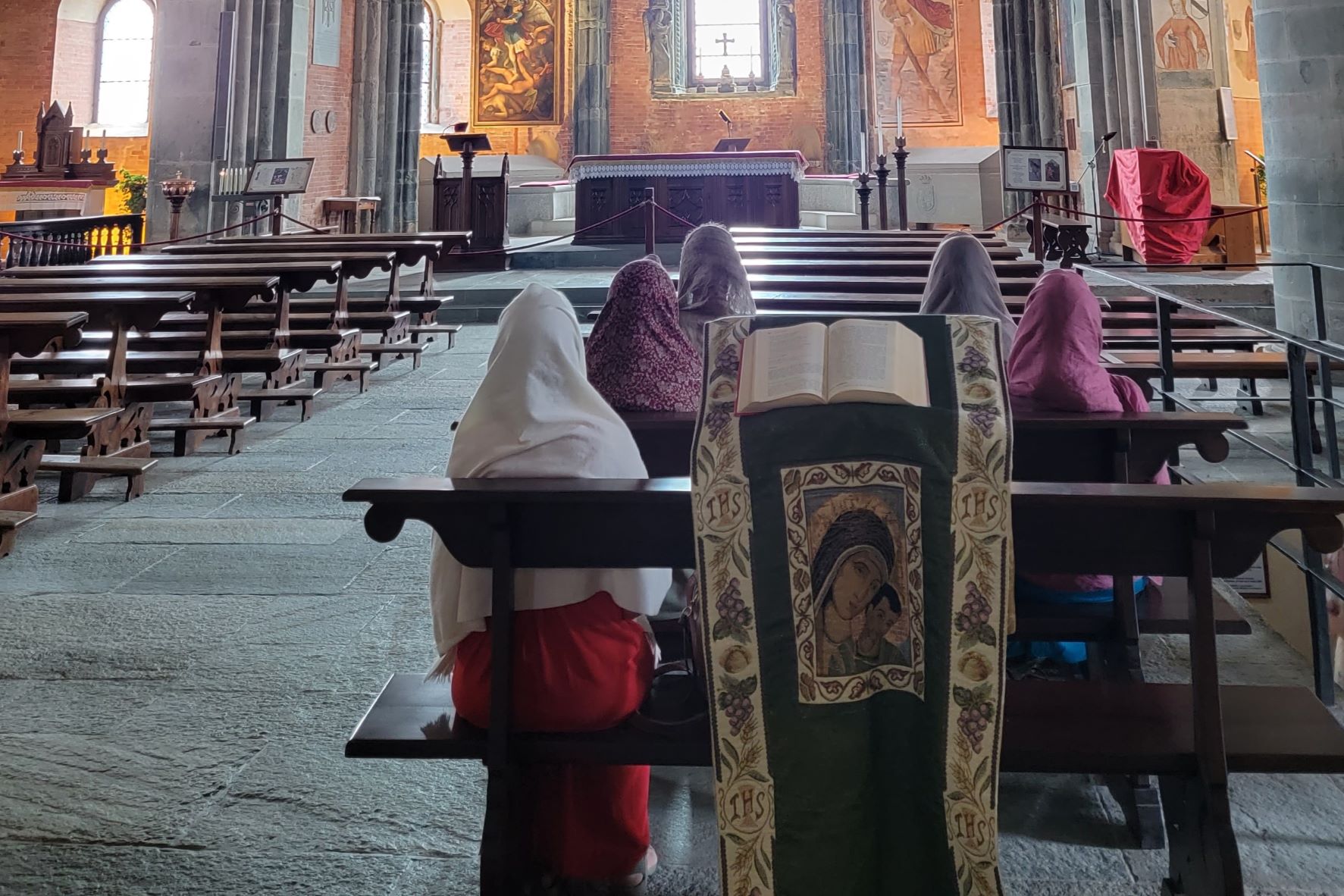
The 'Old Choir' Displays Priceless Art
The entrance to the sanctuary is in the back of the church. to the right are the three apses toward the alter, to the left is an odd shaped area called the ‘Old Choir’ adorned with a timber ceiling where the art is displayed. To the left of the door on entry is the Great Fresco of the Assumption from 1505. The most priceless piece from the alter is the Triptych of Defendente Ferrari from 1520. All around you is beautiful works.
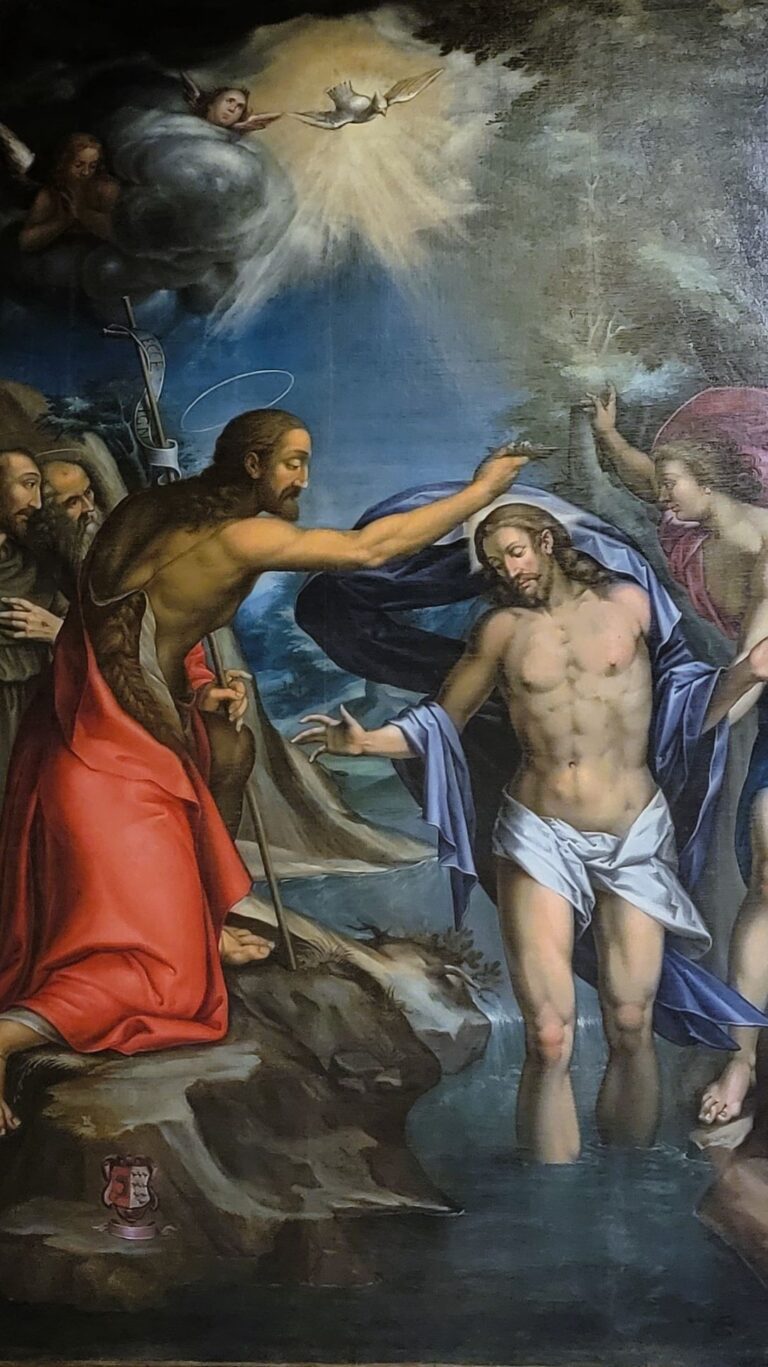
The Beautiful Views are Heavenly
Upon leaving the sanctuary, you walk towards the ‘new monastery’ which is actually the ruins of a five story building and tower built in the 12th to 15th centuries. It was destroyed by earthquakes, weather and bombings over the centuries. The tower or Torre Della Bell’alda has a story. According to legend a village girl Alda went to pry in the sanctuary against the evils of war. Enemy soldiers tried to assault her but she ran and escaped by throwing herself into the ravine where St. Michael catches and saves her. Sadly, she tries attempt another miracle for profit only to find herself dead at the bottom of the ravine. There is an old library and restored rooms that can be accessed on a tour. The exit tunnel is where I bid my last farewell.
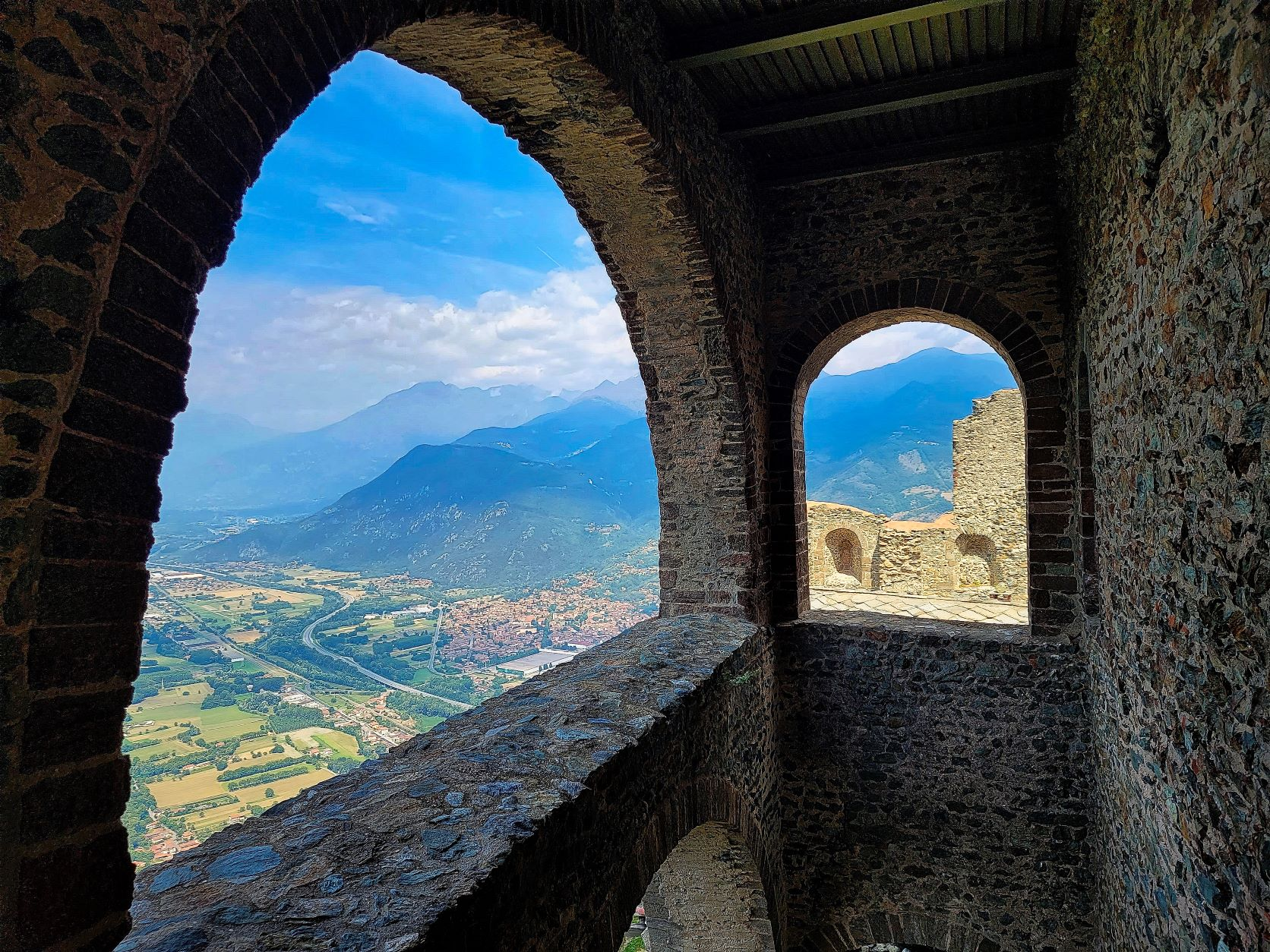
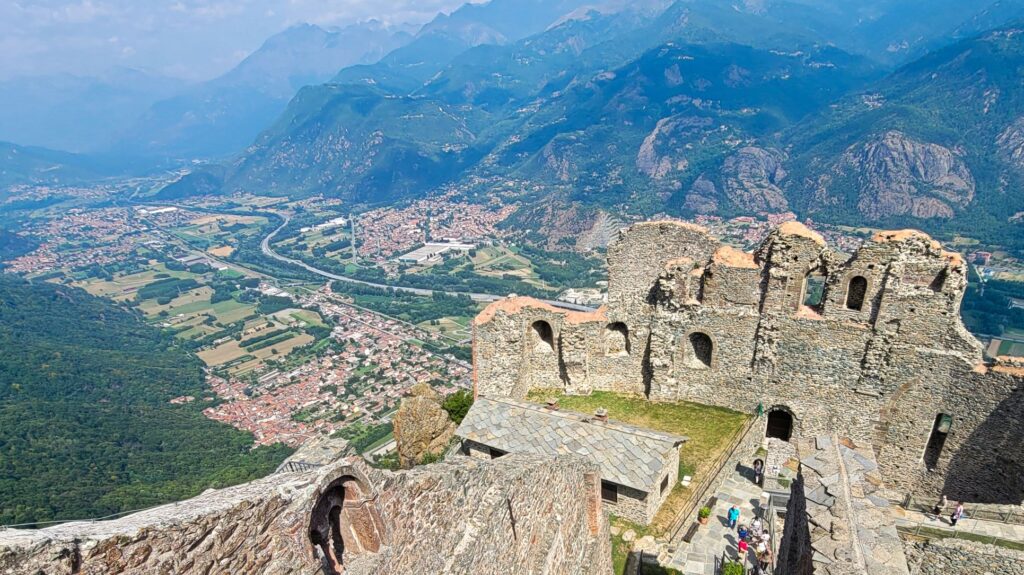
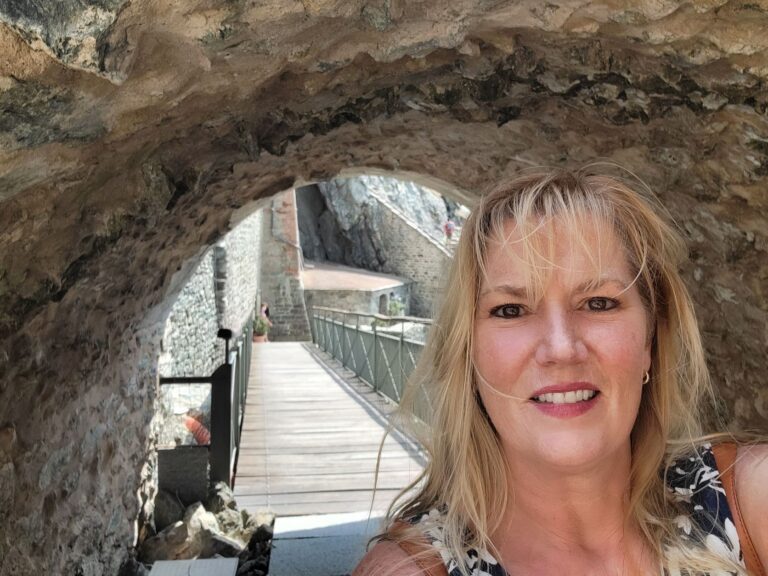
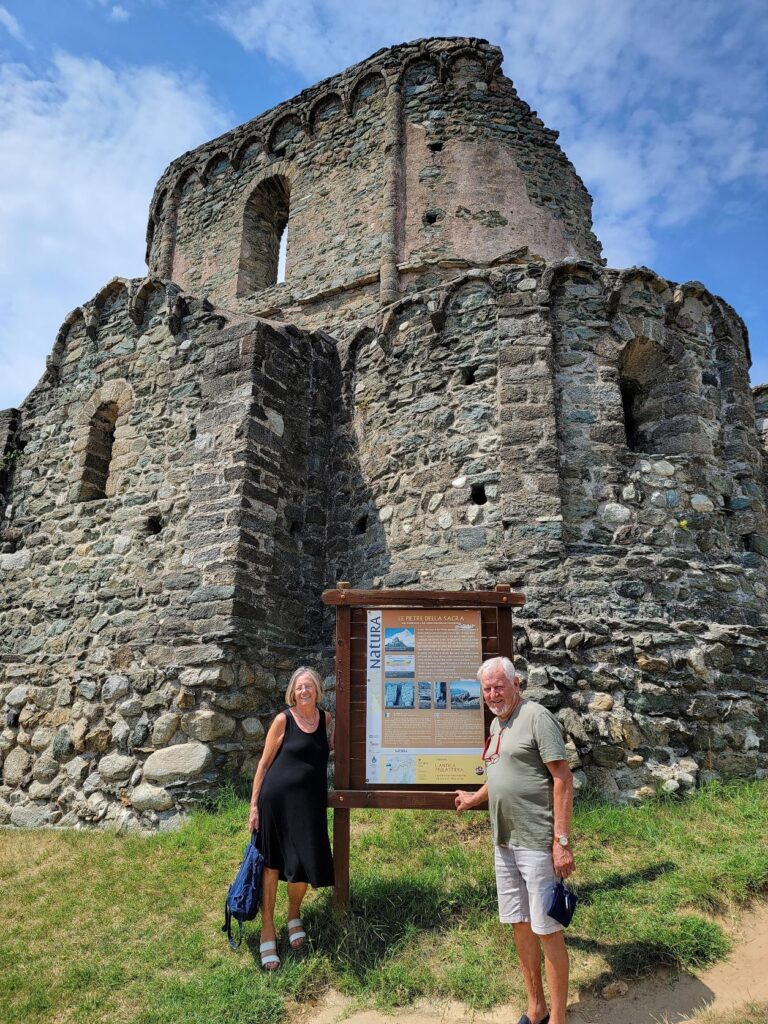
Here Anna and Sergio was kind enough to take a memory photo for me. They are incredible hosts! We still admired the ancient stonework. For those interested in geology, the stones are from the valley floor dated to be 100 million years old. Made of plankton and clay mixtures and submarine volcanic lava flows that were brought to the location before the Alps were formed. Cool huh?
Parking Lot Path and Locals
Along the path was a local farmer with his delicious mountain cheese.
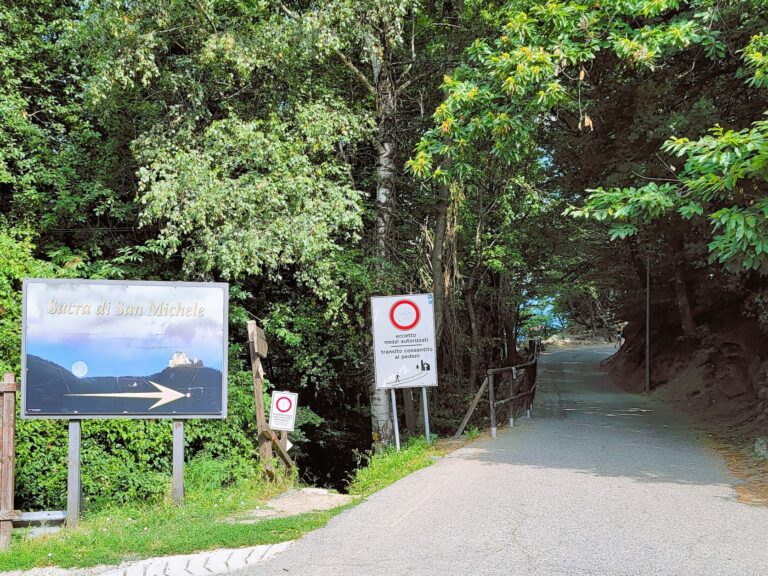
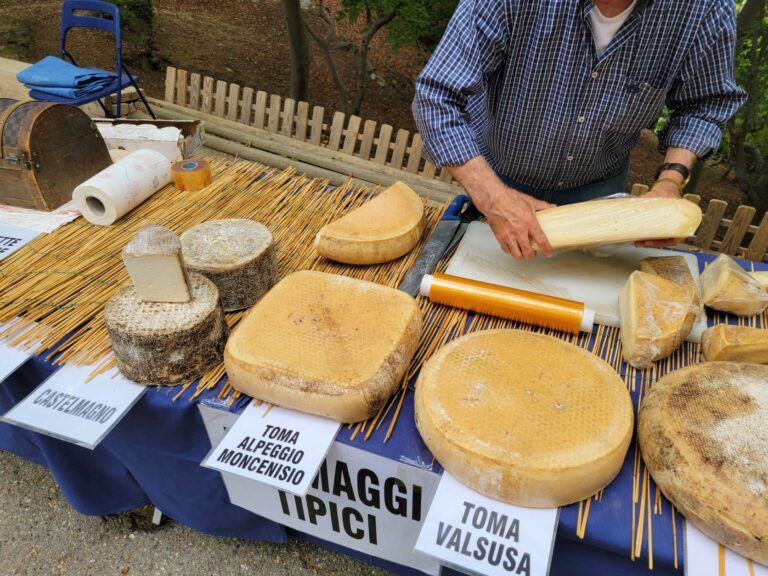
Time for a Mountain Lunch of Homemade Pasta
After all that hiking and walking, we were ready for a lunch. A short mountain drive took us to Le Due Valli Ristorante where we were treated to the most delicious homemade meat raviolis and beer. Such a magnificent day!
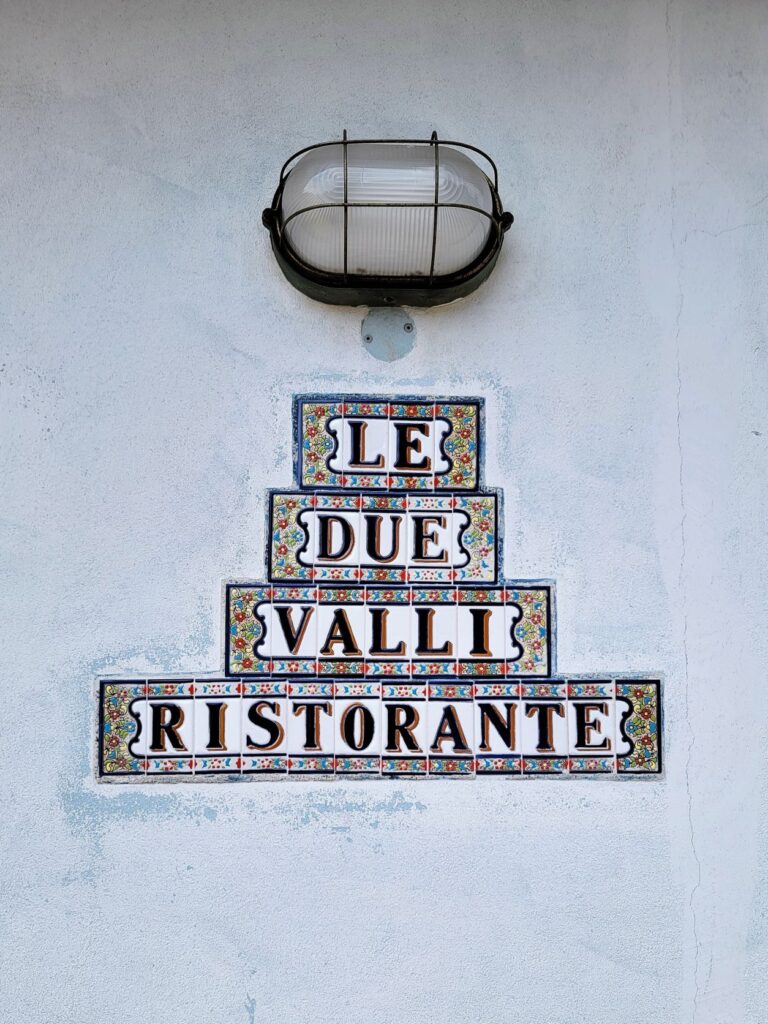
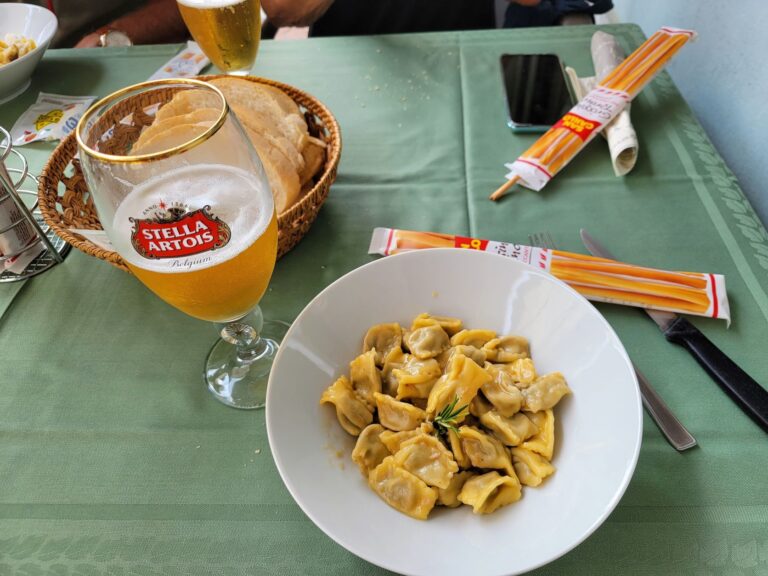
The Mountain Chapel Across the Street
While sitting outside I noticed a mountain community chapel across the street. Another charming place for prayer, you’ll find them everywhere in Italy!
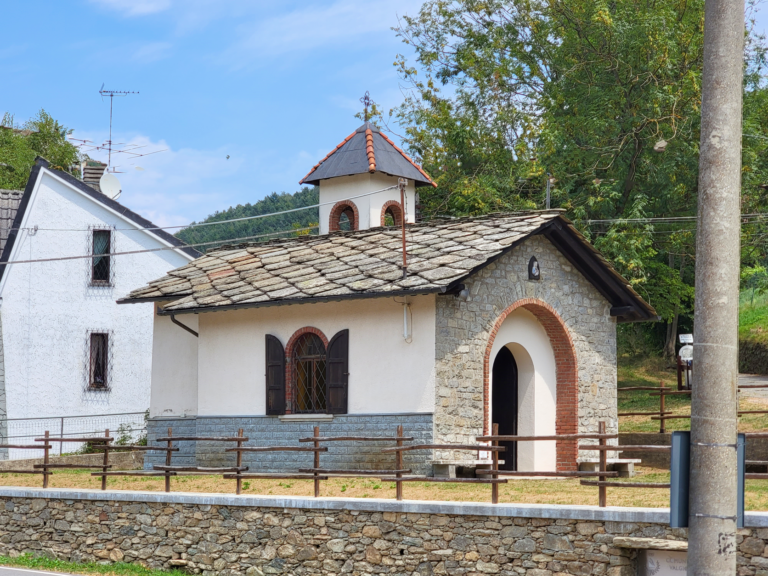
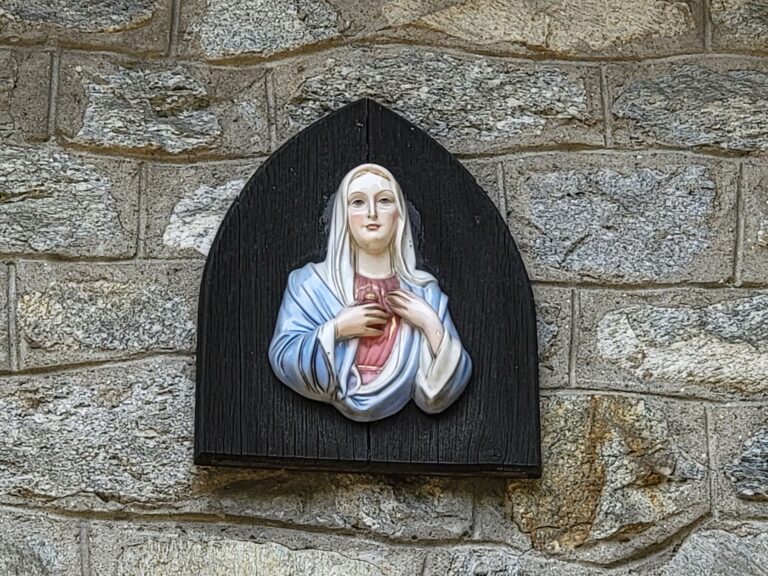
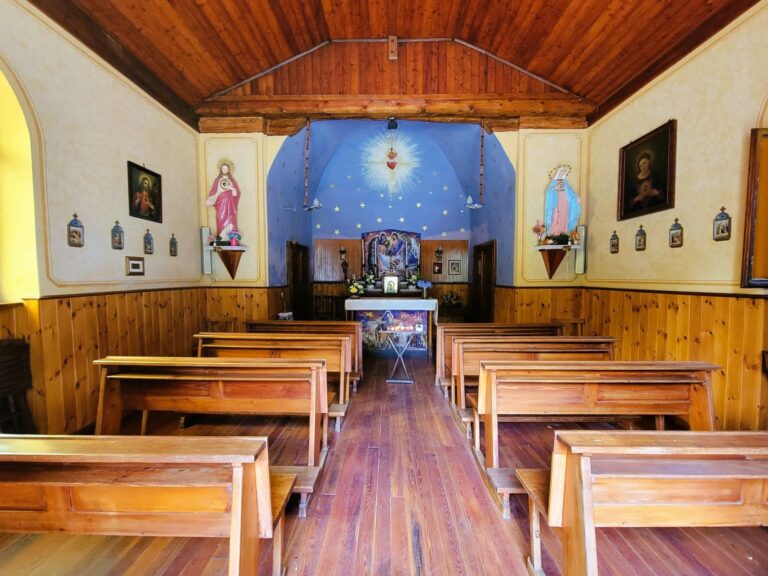
~The Nitty Gritty
🍺 THIRSTY STOPS:
Lakes of Avigliana (Lago Grande di Aviglina) are on the way from Torino and have many beautiful stops for drinks (and food)
- Ristorante Lago Grande & Pub – All drinks and pub food.
- Green Beach – Coffee, Cocktails, Wine, Beers and food.
- Chalet Del Lago – Drinks and fine Dining
At the base of the monastery and a little farther past –
- Ristorante della Sacra – at the base of the monastery path – patio and restaurant with drinks and food.
- Le Due Valli Ristorante – mountain restaurant with drinks and local favorites
🏰BEST SITES IN THE AREA:
Sacra di San Michele as well as MANY other sights are included with the Torino+Piedmonte Card – Check it out!
- Sacra di San Michele – The Abbey of Saint Michael the Archangel
- Centro Storico di Agigliana – the charming town of the region.
- Cappella di Santa Rosa da Lima (Mountain Chapel) – sweet spot across from Ristoranti Le Due Valle
🍴 FOOD FINDS:
- Le Due Valli Ristorante – off Strade Provinciale 188 past the Monestary
- Ristorane Della Sacra – at the base of the path to the Monestary
Restaurants on or near Lago Grande di Avigliana
- Chalet Del Lago – drinks and pizzaria
- Ristorante Lago Grande – Pub del Sugne – waterside restaurant with unique theme
- Ristorante Miralago di Broglia Luigi – Piedmontese Specialties
🚗 GETTING THERE:
By Car – From Torino take E70 to exit 2A towards Lago di Arigliana, follow the signs.
By Train, Bus and Hiking – This link shows all the directions for each – Trenitalia has a train/bus combo for tourists.
✈️ DESTINATION PREP:
- Trip Planning Sheets! Use my Planning Sheets – The PREFLIGHT PLANNER for a travel checklist and city-to-city planning. The DAILY PLANNER for daily city site and museum planning. I USE THEM!
- FOR TRAVEL OUTSIDE THE UNITED STATES: The US State Department Travel Site – ALL trips begin with safety in mind! This site is helpful to EVERYONE WORLDWIDE! I begin by looking at this site for all the latest Worldwide Country Info – Passports, Visa requirements, Travel Advisories
- Enroll in the STEP (Smart Traveler Enrollment Program) – Enrolling lets the State Department know where you are in an emergency and can help you home if needed.


